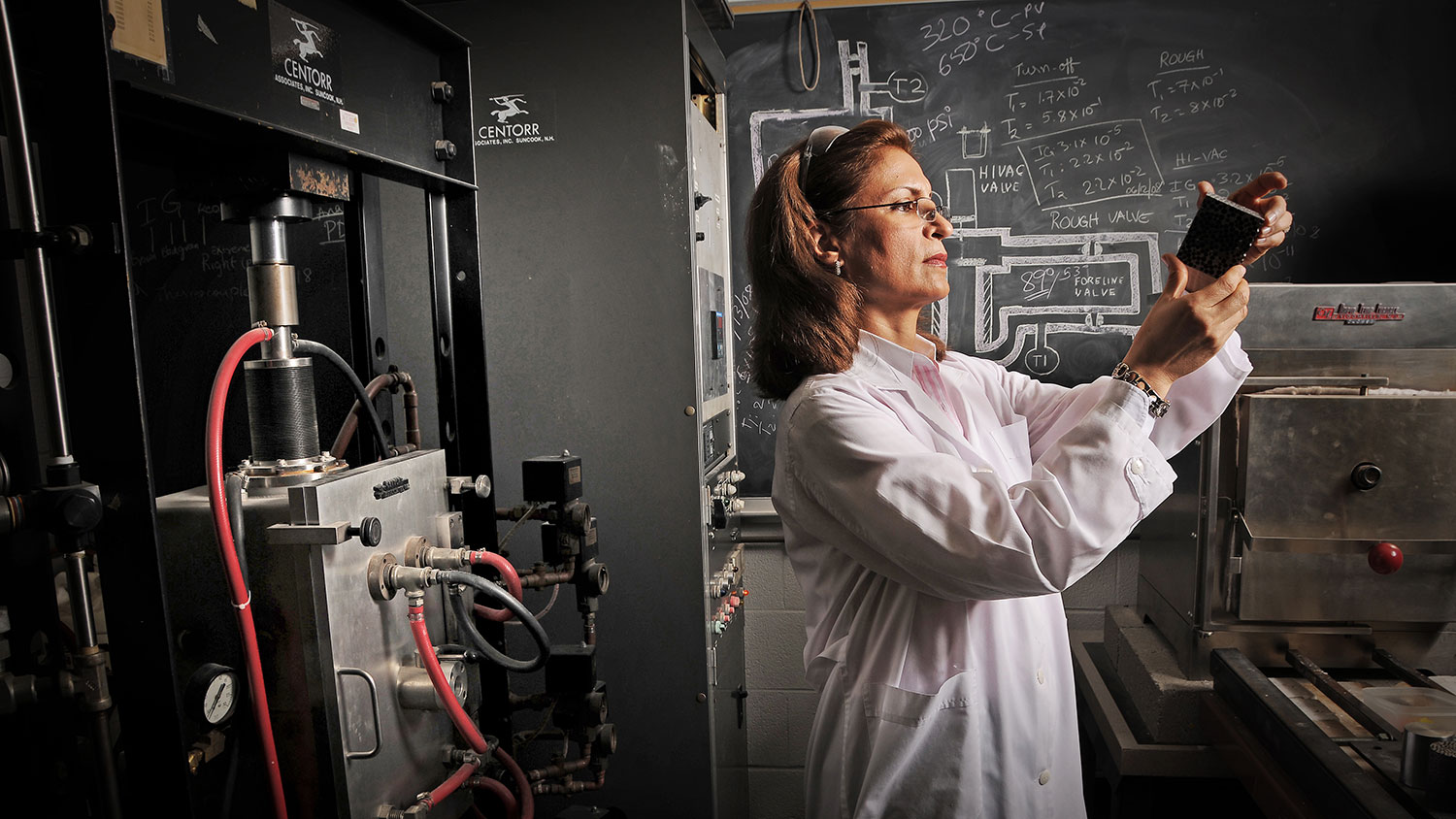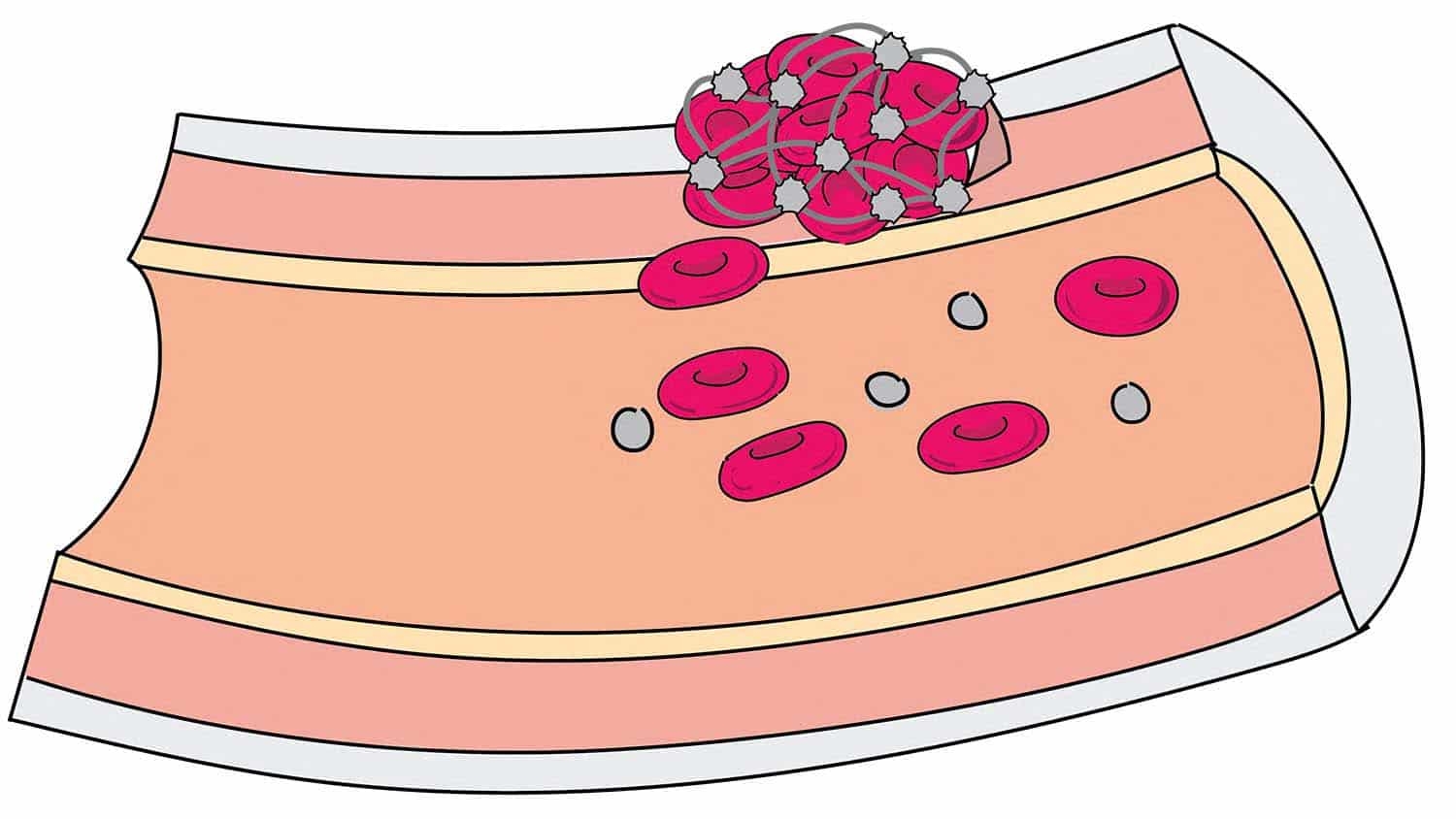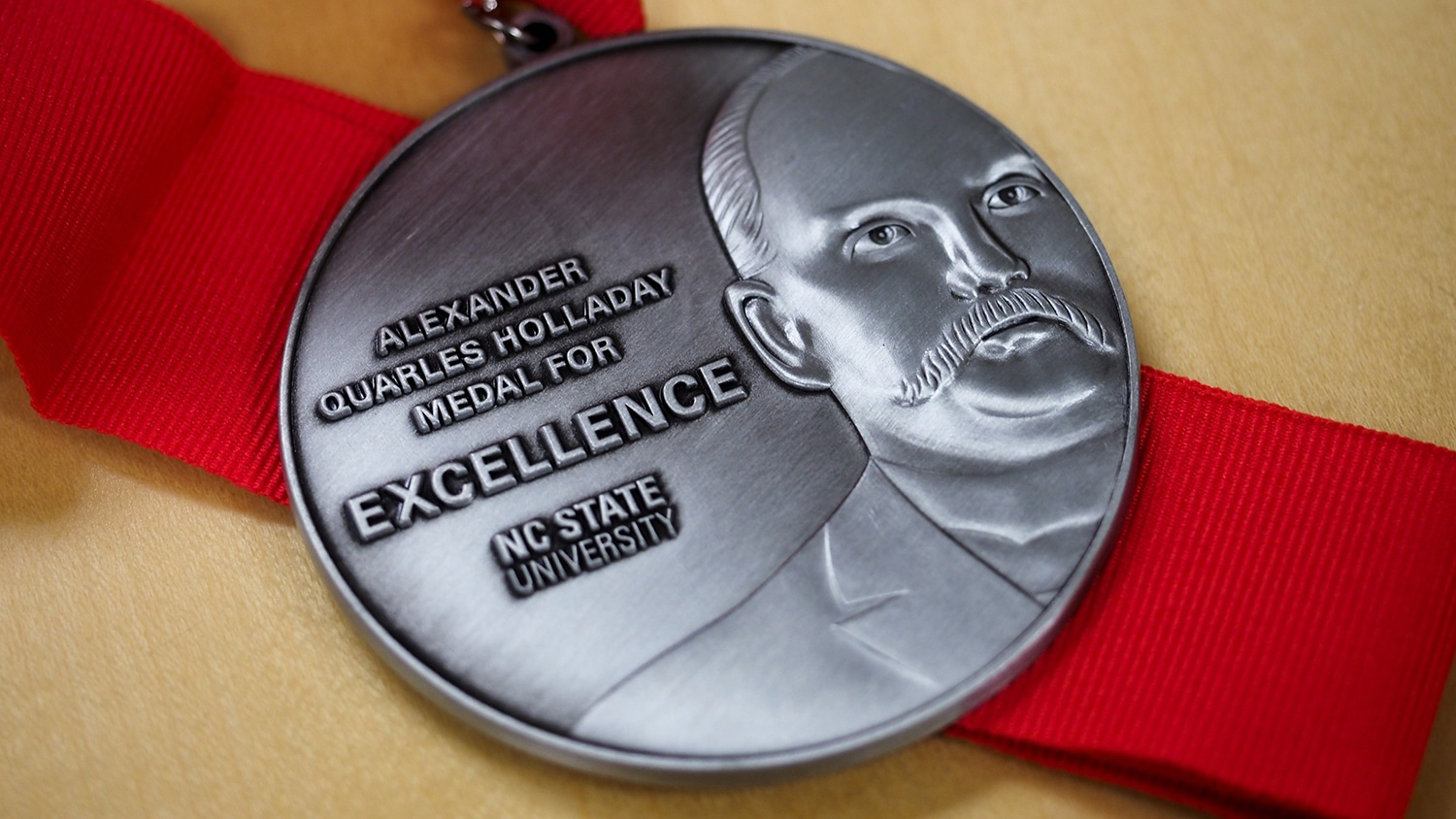Lightweight metal foam blocks blastwave, debris from high-explosive rounds

New research from the Department of Mechanical and Aerospace Engineering (MAE) and the U.S. Army’s Aviation Applied Technology Directorate shows that stainless steel composite metal foam (CMF) can block blast pressure and fragmentation at 5,000 feet per second from high explosive incendiary (HEI) rounds that detonate only 18 inches away.
“In short, we found that steel-CMF offers much more protection than all other existing armor materials while lowering the weight remarkably,” says Dr. Afsaneh Rabiei, senior author of a paper on the work and a professor in MAE. “We can provide as much protection as existing steel armor at a fraction of the weight — or provide much more protection at the same weight.
“Many military vehicles use armor made of rolled homogeneous steel, which weighs three times as much as our steel-CMF,” Rabiei says. “Based on tests like these, we believe we can replace that rolled steel with steel-CMF without sacrificing safety, better blocking not only the fragments but also the blast waves that are responsible for trauma such as major brain injuries. That would reduce vehicle weight significantly, improving fuel mileage and vehicle performance.”
For this study, researchers fired a 23×152 millimeter (mm) HEI round — often used in anti-aircraft weapons — into an aluminum strikeplate that was 2.3 mm thick. Ten-inch by 10-inch steel-CMF plates — either 9.5 mm or 16.75 mm thick — were placed 18 inches from the aluminum strikeplate. The researchers assessed that the steel-CMF held up against the wave of blast pressure and against the copper and steel fragments created by the exploding round, as well as aluminum from the strikeplate.
“Both thicknesses of steel-CMF stopped the blastwave, and the 16.75 -mm steel-CMF stopped all of the fragments from 15-mm2 to over 150-mm2 sizes,” Rabiei says. “The 9.5-mm steel-CMF stopped most, but not all, of the fragments. Based on the results, a 10-mm steel-CMF plate would have stopped all of the frag sizes.”
The researchers also developed computer models of how the steel-CMF plate would perform. When compared to the experimental results, the model matched very closely. The researchers then used the model to predict how aluminum 5083 armor — a type of armor already on the market that has a similar weight and thickness to the 16.75-mm steel-CMF — would perform against HEI rounds.
The model showed that, while aluminum armor of similar weight to the steel-CMF panels would stop all of the frags, the aluminum armor would buckle and allow fragments to penetrate much deeper. The steel-CMF, on the other hand, absorbs the energy of the blast wave and flying fragments through local deformation of hollow spheres, leaving the steel-CMF armor under considerably less stress — offering more protection against fragments and blast waves.
Lead author of the study is Jacob Marx, a Ph.D. student working in Rabiei’s research group.
Return to contents or download the Fall/Winter 2018 NC State Engineering magazine (PDF, 3MB).
- Categories:


